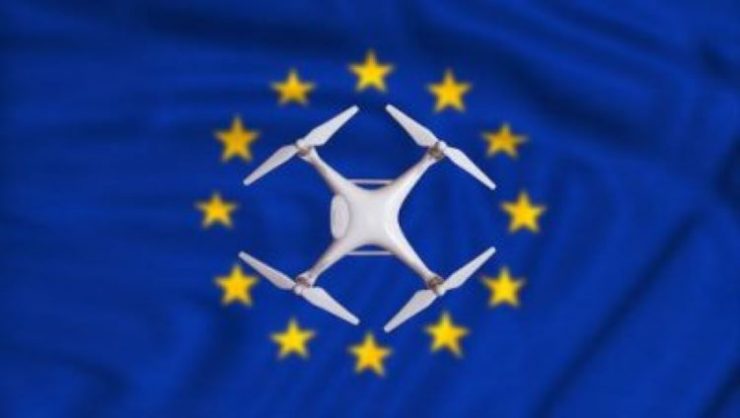A lack of a commonly agreed and certified standards to support beyond visual line of sight (BVLOS) drone flights based on Specific Operations Risk Assessment (SORA) protocols is making the SORA process complex and lengthy for many operators in Europe. AW Drones, a 36 month (2019-2021) project co-funded by the European Commission in the framework of Horizon 2020, has begun work to collect information on available and planned standards, identify gaps and mitigation measures and then develop a set of recommended practices for drone operators to use to simplify the BVLOS authorizations.
“We are in the process of developing an open platform that will be used as information exchange and repository to store information on each standard (see box), and the aim is to have this available to users by June 2020,” said Peter van Blyenburgh, Blyenburgh & Co., France, one of the members of the AW-Drones consortium.
| AW Drones: Aims and methodology
The European Commission and EASA, together with the project consortium, considered the current regulatory needs at EU level and decided to give priority to the following areas:
Collection of UAS standards The starting point for the collection of data has been the European UAS Standards Coordination Group (EUSCG) Rolling Development Plan as it provides an overview of a large number of UAS standards related to UAS. However, this source has been complemented with other data, e.g. ANSI roadmap and own literature studies. The collected standards are linked to the SORA Operational Safety Objectives (OSOs), ground/air risk mitigations (GRM/ARM) and Step #9 (Adjacent Area/Airspace Considerations). This is a first step for the assessment of a standard as a possible Acceptable Means of Compliance (AMC) to one or more OSOs/mitigations. The final outcome of the data collection is a table organized as follows: Standards assessment During the first year (2019) the AW-Drones project focused on the collection and assessment of standards potentially suitable to support the demonstration of compliance to the requirements set in the Specific Operations Risk Assessment methodology (SORA). This methodology is officially recommended by EASA as AMC to Article 11 of EU Regulation 947/2019, but at the moment lacks clear guidance on which technical standards the UAS operators should use.
AW-Drones is in charge of the assessment of the standards collected as described in the previous section. The assessment is carried out according to the methodology defined by the project. This assessment was carried out for all the requirements stemming from the SORA methodology, including: • Ground Risk Mitigations • Tactical Mitigations Performance Requirements (TMPR) • Operational Safety Objectives (OSOs) • Adjacent Area/Airspace requirements The assessment did not address the technical quality of the individual standards. It was assumed that each standard was adequate to fulfil the scope for which it was developed, and we focused the assessment focused only on the evaluation of its capability to address the requirements. The AW-Drones open repository is an online platform that will provide a single point of access to relevant information about: · rules, procedures and technical standards developed for civilian drones; · best practices, gaps and bottlenecks; · technical standard for each category of drone operations; Apart from an open platform that will be used as information exchange (access, mine, exploit, reproduce, disseminate data), the AW-Drones repository will also include collaboration features (commenting, rating, adding and editing content, reviewing, etc.) that will enhance its use and purpose and will further support its sustainability even after the end of the AW-Drones project. The AW-Drones repository will store the following information for each standard: Domain (Domain and Subtopic), Type of Standard (Whether it is Standard/Specification, Best Practice or Information/Guidance), Document info (Document No, Title, Organization, Status, Description), Safety requirements (including affected SORA OSOs, Technical requirements, Operational requirements, Remote crew training, Safe design, Deterioration of external systems supporting UAS operation, Human Error, Adverse Operating Conditions), Ground Risk Mitigations (M1 Generic, M2 Effects on ground impact, ERP), Collision Risk / Air Risk (Strategic Mitigation, Tactical Mitigation). Four types of users have been identified: Administrator, Editor, Acknowledged user and basic user. Different functionalities will be offered for each type of user. The AW-Drones open repository will be ready in June 2020 and will be linked by the project website: https://www.aw-drones.eu/. |
For more information
AW-Drones Project Coordinator: Damiano Taurino, Deep Blue (damiano.taurino@dblue.it)
AW-Drones Communication manager: Vera Ferraiuolo, Deep Blue (vera.ferraiuolo@dblue.it)
AW-Drones Project website: https://www.aw-drones.eu/
AW-Drones Project LinkedIn Page: https://www.linkedin.com/company/aw-drones/




